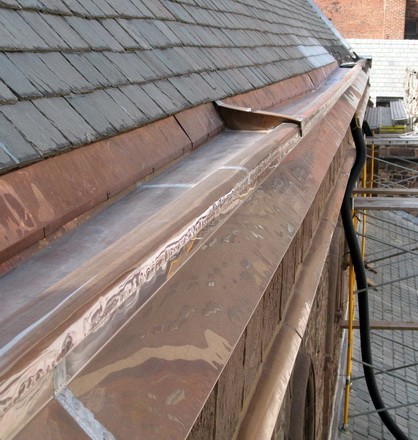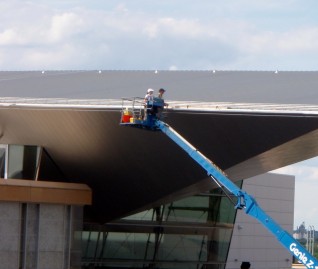
Thermally-induced movement can be substantial and must be accommodated with expansion joints to avoid out-of-plane buckling, kinks, failed seams, and fatigue cracks. Such failures can undermine the gutter liner’s performance and result in water leakage to the interior. Knowing how much a given length of gutter might move over an expected service temperature range is helpful in the design and installation of durable gutter liners that will accommodate thermally-induced movement.
In this primer, from roofing expert Jeffrey Levine learn more about thermal movement in copper gutter liners.
RELATED INFORMATION
-
 Jeffrey S. Levine, PrincipalWJE Philadelphia MORE >People | Jeffrey S. Levine, Principal
Jeffrey S. Levine, PrincipalWJE Philadelphia MORE >People | Jeffrey S. Levine, Principal -
 WJE's roofing and waterproofing consultants have reviewed thousands of system failures and... MORE >Services | Roofing and Waterproofing
WJE's roofing and waterproofing consultants have reviewed thousands of system failures and... MORE >Services | Roofing and Waterproofing -
 Clients turn to us when they need a firm that fully understands the aesthetic and functional... MORE >Services | Building Enclosures
Clients turn to us when they need a firm that fully understands the aesthetic and functional... MORE >Services | Building Enclosures -
 Learn about our Philadelphia office MORE >Offices | Philadelphia
Learn about our Philadelphia office MORE >Offices | Philadelphia



































